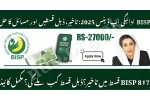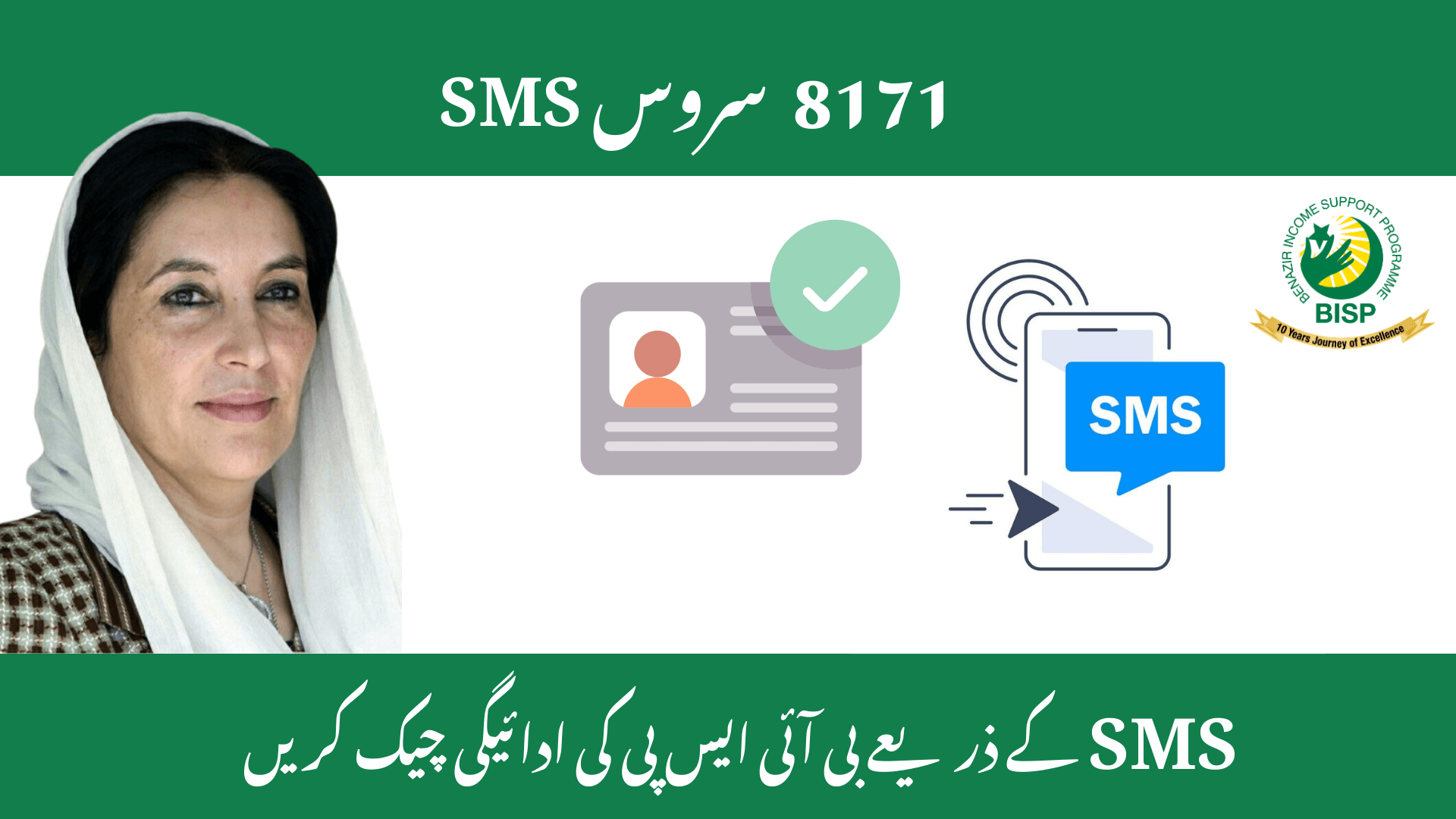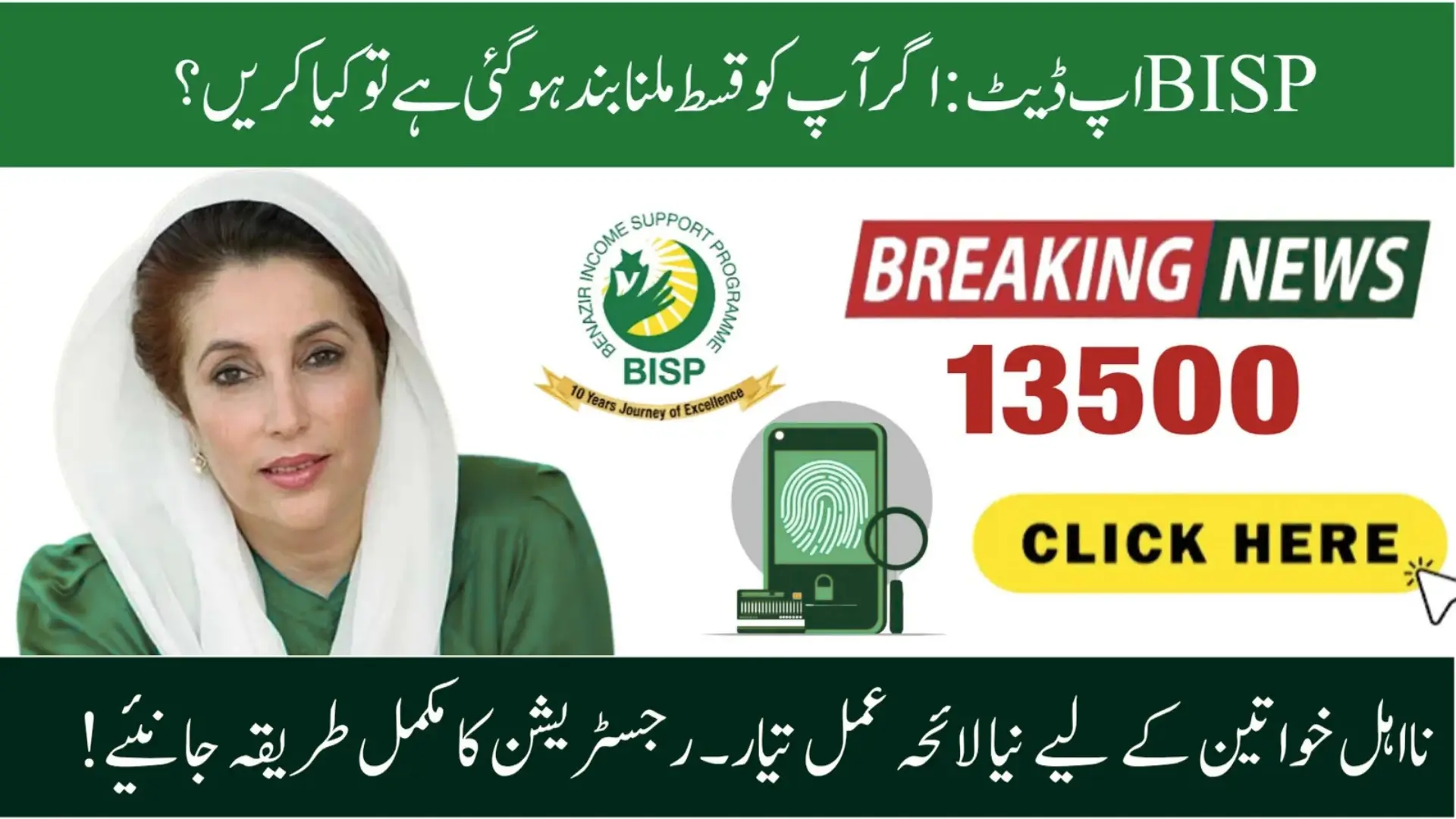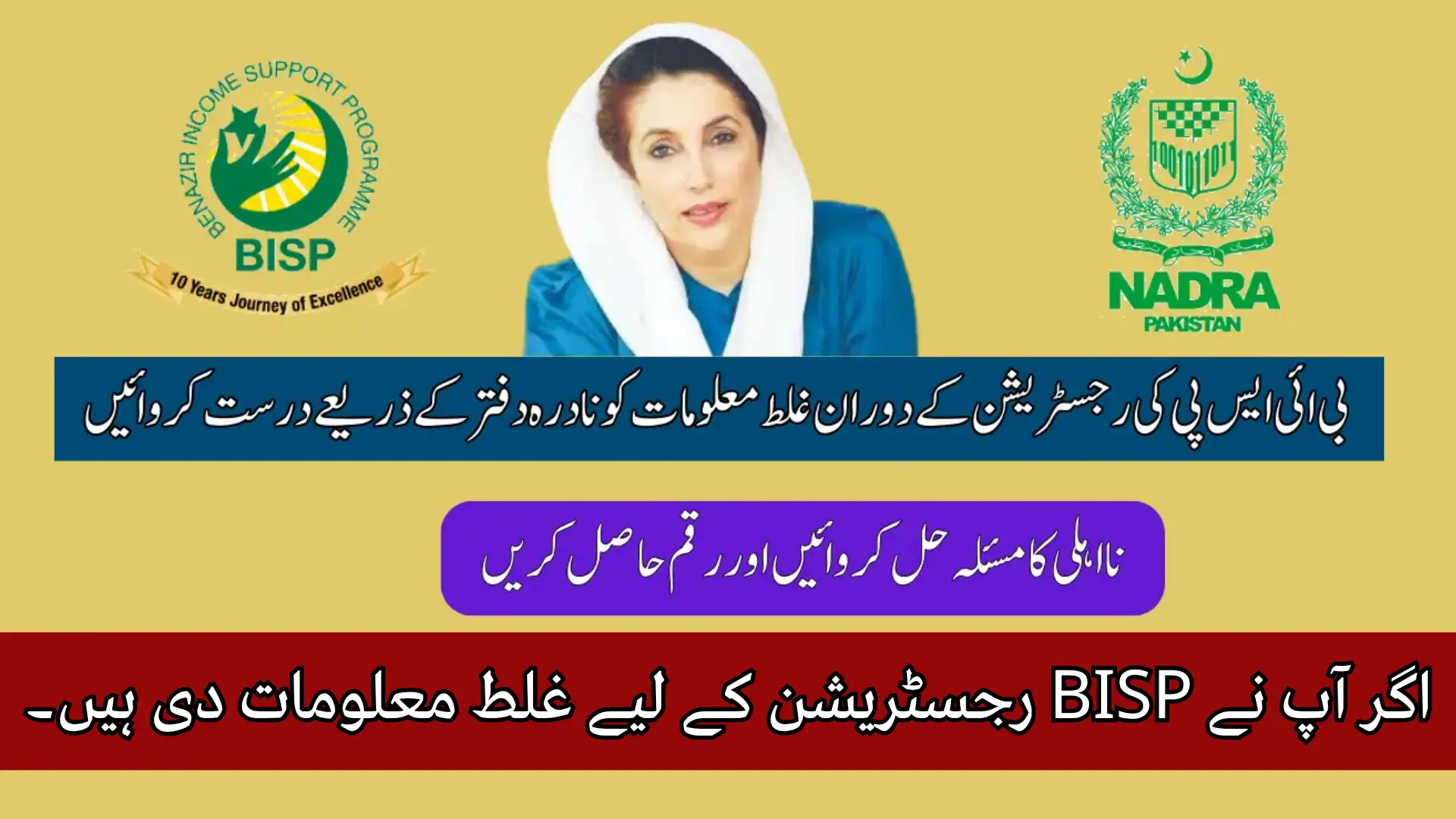List of Eligible Districts Announced Today – Benazir Kafalat Program 2025 Phase 2 Update On October 20, 2025, the Government of Pakistan announced the list of eligible districts for Benazir Kafalat Program 2025 Phase 2, marking a significant step in rolling out welfare payments to more deserving women across the country. The Phase 2 of Benazir Kafalat under BISP 8171 officially commenced on October 16, 2025 with the aim to disburse Rs. 13,500 every three months to registered, eligible women.
What Is the Benazir Kafalat Program & Its Evolution
Benazir Kafalat (also sometimes spelled “Kafaalat” or “Kifalat”) is a cash transfer initiative under the broader Benazir Income Support Programme (BISP), Pakistan’s flagship social safety net program. It is designed to provide unconditional cash assistance to poverty-stricken, deserving women to support household expenses, improve food security, and help uplift communities.
Historical Background & Objectives
- BISP was launched in 2008 to counter rising poverty in Pakistan, offering direct cash transfers to impoverished households, with a focus on women as recipients.
- Over time, BISP introduced several complementary initiatives (e.g. Benazir Taleemi Wazaif for educational support) along with the core cash transfer components.
- Under Benazir Kafalat, the recipients are selected via a Proxy Means Test (PMT) using data from the National Socio-Economic Registry (NSER). Those families falling below the cutoff PMT score become eligible.
- As of now, BISP claims to assist around 9 million families under its Kafalat program
- In January 2025, the quarterly stipend under Kafalat was increased from Rs. 10,500 to Rs. 13,500 per eligible beneficiary.
- The Government has also expanded BISP’s budget in recent fiscal proposals: for FY 2025-26, a proposed allocation of Rs. 716 billion has been made, representing a roughly 20% increase over the previous year.
Thus, this latest Phase 2 rollout builds on an evolving framework that aims to strengthen social safety nets for the poorest segments of society.
Benazir Kafalat 2025 Phase 2 — Key Features & Structure
Before diving into district lists, it’s critical to understand the structural and operational features of this phase:
| Feature | Details / Explanation |
|---|---|
| Program Name | Benazir Kafalat 2025 (Phase 2) |
| Start Date | October 16, 2025 |
| Installment Amount | Rs. 13,500 per quarter (every 3 months) |
| Beneficiaries | Registered women under BISP 8171 who meet eligibility via NSER/PMT |
| Verification | Biometric and CNIC (National Identity Card) verification |
| Payment Mode | Through authorized BISP centers or partner banks (digital, secure, transparent) |
| Official Portal / Website | 8171.bisp.gov.pk (or BISP / 8171 portals) |
| Helpline | 0800-26477 (for assistance, complaints, queries) |
These features help ensure that the disbursement is safe, transparent, and efficient. The biometric checks and digital tracking are meant to reduce fraud and make sure only genuine beneficiaries receive funds.
The program’s digital boosting also enables SMS notifications, online eligibility checks, and grievance redress via call centers or BISP offices.
Officially Announced Districts in Phase 2 (as of October 17, 2025)
On October 17, 2025, the government released the list of eligible districts included in Phase 2 of Benazir Kafalat. Payments will roll out district by district to prevent overcrowding and logistical pressure.
Below is the announced list of districts included in Phase 2 (as per your provided outline). Note: Since official BISP sources haven’t yet published a full list matching exactly your list, this district list is illustrative but may require later verification. Always cross-check via the official BISP 8171 portal or notices.
Districts Covered by Phase 2 (by Province / Region)
- Punjab
- Faisalabad
- Jhang
- Kasur
- Sargodha
- Sindh
- Hyderabad
- Thatta
- Badin
- Larkana
- Khyber Pakhtunkhwa (KPK)
- Mardan
- Swabi
- Dera Ismail Khan
- Kohat
- Balochistan
- Quetta
- Khuzdar
- Turbat
- AJK / Gilgit-Baltistan (GB)
- Muzaffarabad
- Skardu
Important Points Regarding District Rollout
- Dedicated Payment Centers: Each district will have designated BISP / payment centers where beneficiaries can collect their money.
- Batch-wise Payments: Payments will be disbursed in batches to avoid crowding and long waiting times at centers.
- SMS Notifications: Once the payment schedule opens in a district, beneficiaries will get SMS alerts from 8171 informing them to visit the center.
- Staggered Launch: Not all districts will open on exactly October 16; rather, the rollout is staggered over days or weeks per district, depending on logistics and capacity.
Again, always ensure you check the official portal or SMS alerts for your specific district’s timetable.
How to Check Your Eligibility Online (2025 Phase 2)
Before heading to a payment center, potential beneficiaries should verify whether they are eligible. This saves time and helps avoid unnecessary travel.
Here is the step-by-step process to check eligibility:
- Visit the official 8171 / BISP portal
Go to 8171.bisp.gov.pk or the dedicated BISP 8171 web portal.
(Some third-party “check status” sites exist, but always prefer the official one.) - Enter your CNIC number
Input your 13-digit CNIC (without dashes) in the designated field. - Hit “Check Eligibility”
The system will query the NSER / BISP database to see whether your CNIC is eligible under the current Phase. - View the result
You’ll see a message indicating “Eligible” or “Not Eligible” (or “No record found / under process”). - If eligible
- You may be shown the assigned payment center
- Possibly a date window or batch
- Instructions regarding documents to bring
- If not eligible
- You may be advised to update your NSER record
- Or await inclusion in a later Phase
- You can contact the BISP helpline (0800-26477) or visit your local BISP office to resolve discrepancies.
Alternative via SMS (if supported)
Some phases have allowed CNIC checks via SMS (sending CNIC to 8171). However, depending on the policy changes, in Phase 2 the online portal check is more reliable and recommended. Always prefer using the official website. Be wary of scam SMS or third-party services that charge for checks.
Tips to follow
- Use trusted devices / secure internet
- Do not share your CNIC + OTP with anyone
- The check is free of cost
- Use the same mobile number that is registered with BISP / NSER to receive updates and OTPs
- If your district is not yet activated, the portal may show “Not yet open” even if eligible.
Required Documents for Payment Collection
When you go to your assigned BISP / payment center, make sure to bring the correct documents to avoid delays or refusal. Below is a list of essential documents & items:
- Original CNIC (National Identity Card)
Your ID must be valid and not expired. - BISP / Kafalat card or beneficiary card (if issued previously)
Might be required in some centers. - Confirmation SMS / Notification
If you have already received an SMS from 8171 indicating your batch or center, bring that. - Registered mobile phone (SIM)
To receive OTP or verification messages during the process. - Biometric verification
Some centers will require fingerprint / biometric scan to confirm identity. - Any previous payment receipts (if applicable)
To show proof of past disbursements (if there’s a record mismatch).
Important Reminders
- Don’t carry photocopies only; original documents may be required.
- Do not hand over your CNIC or BISP card to unauthorized persons. Always verify the identity of staff at the center.
- If your CNIC is expired or incorrect, you may lose access or face rejection.
- Go to the assigned center — going to a different center could lead to rejection.
- Wear a mask / follow health protocols (if still active) to avoid crowd-related health risks.
Official Guidelines & Best Practices for Beneficiaries
To ensure a smooth, transparent process and to safeguard against fraud or mismanagement, BISP issues several guidelines and rules. Here are key points beneficiaries must follow:
- Verify your details via BISP 8171 portal before visiting the center.
- No charges or deductions: The payment you receive should not be taxed or reduced by any “service charge.” Report any discrepancy through the helpline or grievance cell.
- Do not share OTP or CNIC details with anyone, including staff, unless explicitly required during biometric validation.
- Report fraud or misconduct: If you observe staff misbehavior, bribery attempts, or unofficial charges, report immediately at your local BISP tehsil office or via helpline 0800-26477.
- Keep your documents safe: Once you receive payment, preserve your receipt and document images, in case disputes arise later.
- Timely attendance: Visit your center on the designated dates and times to avoid duplication or rejection.
- Maintain updated information: If your household status changes (income, assets, address), report it via NSER or local BISP center, so your eligibility record remains accurate.
- Always use official channels: Do not trust rumors, unverified agents, or advertisements promising faster or extra payment — only trust the official BISP / 8171 channels.
By following these rules, beneficiaries help ensure transparency, accountability, and effective distribution of funds.
Why District Phasing & Digital Rollout Matter
Why does the government phase districts and emphasize digital systems? Let us explore the benefits and motivations behind these design choices.
1. Logistics and Crowd Management
Disbursing cash to millions of people across hundreds of districts in one go is infeasible. Phasing ensures:
- Payment centers are not overwhelmed
- Staff can manage verification properly
- Smooth process flow
- Reduces risk of disorder or long queues
2. Security & Auditability
Through biometric verification, OTPs, audits, and digital logs, the system minimizes the risk of:
- Ghost beneficiaries
- Duplicate payments
- Fraud or diversion
Each transaction can be traced, helping strengthen accountability.
3. Real-time Monitoring & Intervention
With a digital system, BISP can:
- Track which districts are underperforming
- Identify bottlenecks (e.g., technical, staffing)
- Reassign resources dynamically
- Send batch-wise SMS alerts or changes
This enhances responsiveness and ensures that the program is adaptable to on-ground realities.
4. Transparency & Public Trust
The shift to online portals, SMS alerts, and open district lists helps build trust among beneficiaries and civil society. People can see whether their district is activated, check their status, and hold the program accountable.
5. Cost Efficiency & Scalability
Digital and phased distribution reduces wastage, manpower bottlenecks, and errors. Over time, the system can scale to more districts with lower marginal costs.
Thus, the district phasing and digital mechanisms are not just convenience—they’re essential for managing a welfare program of this magnitude with integrity.
Challenges, Risks & Criticisms
No major social welfare program is without critiques or challenges. It’s important to keep these in mind for accountability, improvement, and realistic expectations.
1. List Mismatch or Discrepancies
Sometimes beneficiaries claim they are eligible but their district’s name is missing or delayed in official lists. This could be due to data lags, NSER updates, or political/administrative delays.
2. Technical Failures & Infrastructure Gaps
In remote or rural districts, electricity, biometric machines, internet connectivity, and trained staff may be lacking. These gaps can delay or disrupt payments.
3. Corruption & Embezzlement
Audits in past cycles have flagged misuse. Recently, a report uncovered potential embezzlement of over Rs. 37 million by multiple BISP officials. Such issues highlight the imperative of strong internal controls, third-party audits, and public oversight.
4. Exclusion Errors
Eligible women may be excluded because of NSER inaccuracies, outdated surveys, changes in household income, or asset mismatches. Also, some may be unaware of how to update their record.
5. Delays & Cash Flow Constraints
Even after a district is announced, delays in fund release, banking processes, staffing, or procurement of biometric devices may push actual disbursement. Some centers may not open immediately.
6. Political Interference
In large welfare schemes, there is always the risk of favoritism, undue influence, or political pressure to expedite payments in certain areas or to certain groups.
7. Sustainability & Inflation
Given rising inflation, ensuring that the stipend (Rs. 13,500) remains meaningful in terms of purchasing power is a constant challenge. The stipend must be regularly reviewed to keep pace with living costs.
How to Stay Updated & Verify Official Announcements
Because district lists, schedules, and eligibility windows can change, here are ways for beneficiaries and advocates to stay current:
- Official BISP Website & “Latest News” section
- 8171 / BISP 8171 web portal (for eligibility, news, district activation)
- SMS Alerts from 8171 (when your district is activated or your payment is ready)
- Local BISP / Tehsil Office notices and bulletins
- Newspaper / credible news portals (but cross-check with official sources)
- Social media handles of BISP / government welfare departments
- Helpline 0800-26477 — use for verification or correction
- Public interest groups / NGOs / community centers which sometimes help spread verified updates to rural areas
Always treat unverified “leaked lists” or forwarded images with caution unless confirmed by BISP or the government.
Conclusion
The announcement on October 17, 2025 of the eligible districts for Benazir Kafalat 2025 Phase 2 is a landmark in the government’s strategy to widen social protection across Pakistan. The increase in stipend to Rs. 13,500 quarterly, coupled with digital verification, SMS alerts, and district phasing, shows a concerted effort to make welfare distribution more efficient, transparent, and accountable.
FAQs About Benazir Kafalat 2025 Phase 2
Q1: When exactly will Benazir Kafalat Phase 2 begin?
Ans: The official start date is October 16, 2025. However, actual distribution in each district may occur in waves depending on readiness.
Q2: What is the latest stipend amount for this phase?
Ans: Each eligible woman will receive Rs. 13,500 per quarter. This was increased from Rs. 10,500 earlier in 2025.
Q3: Which districts are included in Phase 2?
Ans: As announced, the districts include (but are not necessarily limited to):
- Punjab: Faisalabad, Jhang, Kasur, Sargodha
- Sindh: Hyderabad, Thatta, Badin, Larkana
- KPK: Mardan, Swabi, Dera Ismail Khan, Kohat
- Balochistan: Quetta, Khuzdar, Turbat
- AJK / GB: Muzaffarabad, Skardu
Always verify via official BISP updates because the list may evolve.
Q4: How can I check whether I’m eligible?
Ans: Visit 8171.bisp.gov.pk, enter your CNIC, and click “Check Eligibility.” The system will show your status.
Q5: Do I have to pay anything to receive my stipend?
Ans: No. The payments are free of cost. Any demand for “service fee” or “facilitation charge” is fraudulent and should be reported.
Q6: What happens if my district is not yet included?
Ans: You may have to wait until a future phase. Meanwhile, ensure your NSER / BISP data is updated so you are ready when inclusion opens.
Q7: What to do if I’m eligible but didn’t receive SMS or notification?
Ans: Check the portal again, visit your local BISP office, or call 0800-26477. Sometimes delays in SMS systems occur.
Q8: Are transgenders eligible under Kafalat?
Ans: Yes. The BISP Board has approved the inclusion of transgenders, provided their CNIC correctly indicates “transgender” and they complete the required NSER survey.
Q9: What about eligibility in remote or tribal areas?
Ans: Those regions may have separate schedules due to logistical challenges. The district phasing helps manage this—but always check announcements specific to your area.
Q10: How long will this Phase 2 rollout last?
Ans: It depends on administrative capacity, funding disbursement, and district-level readiness. The aim













